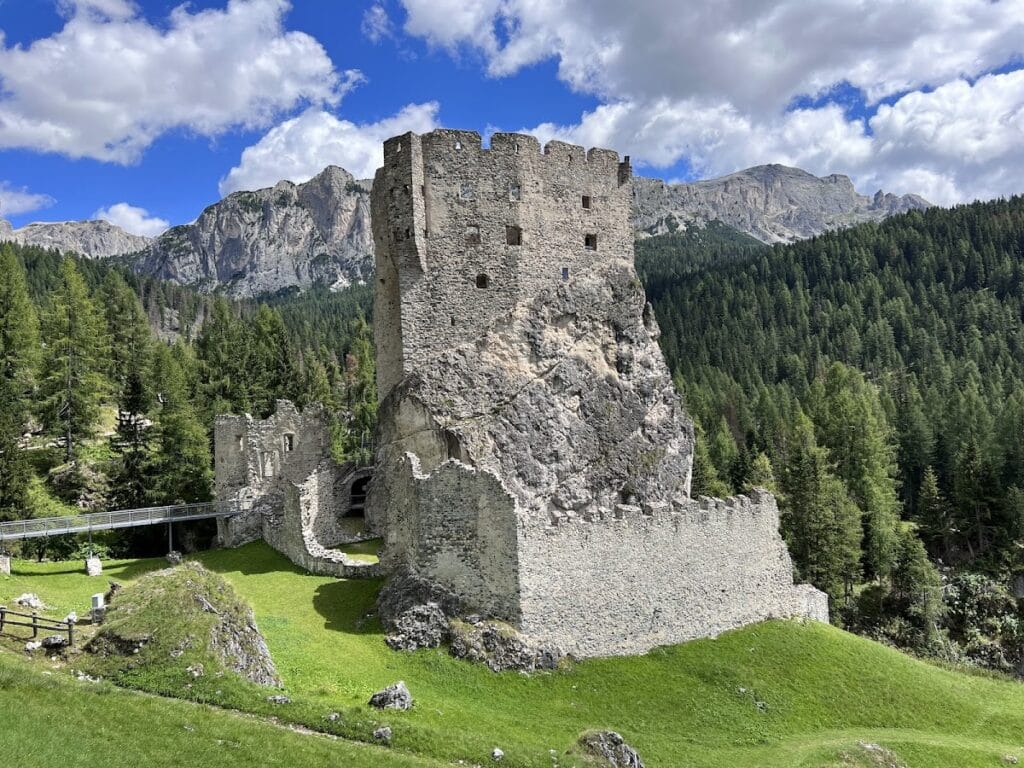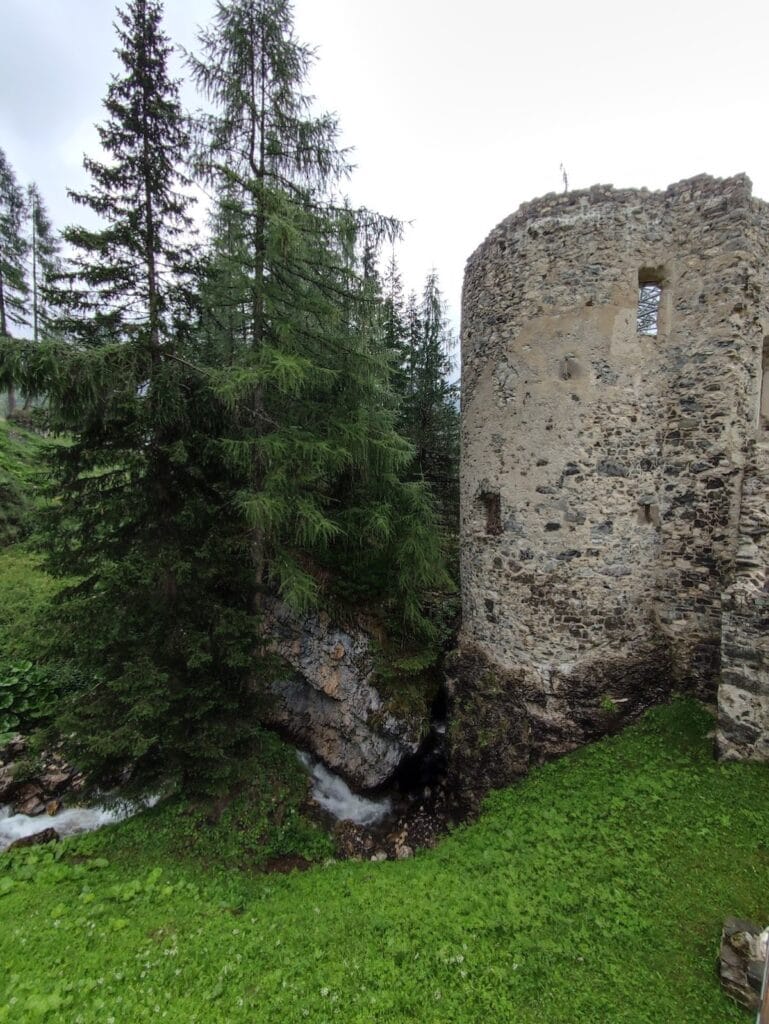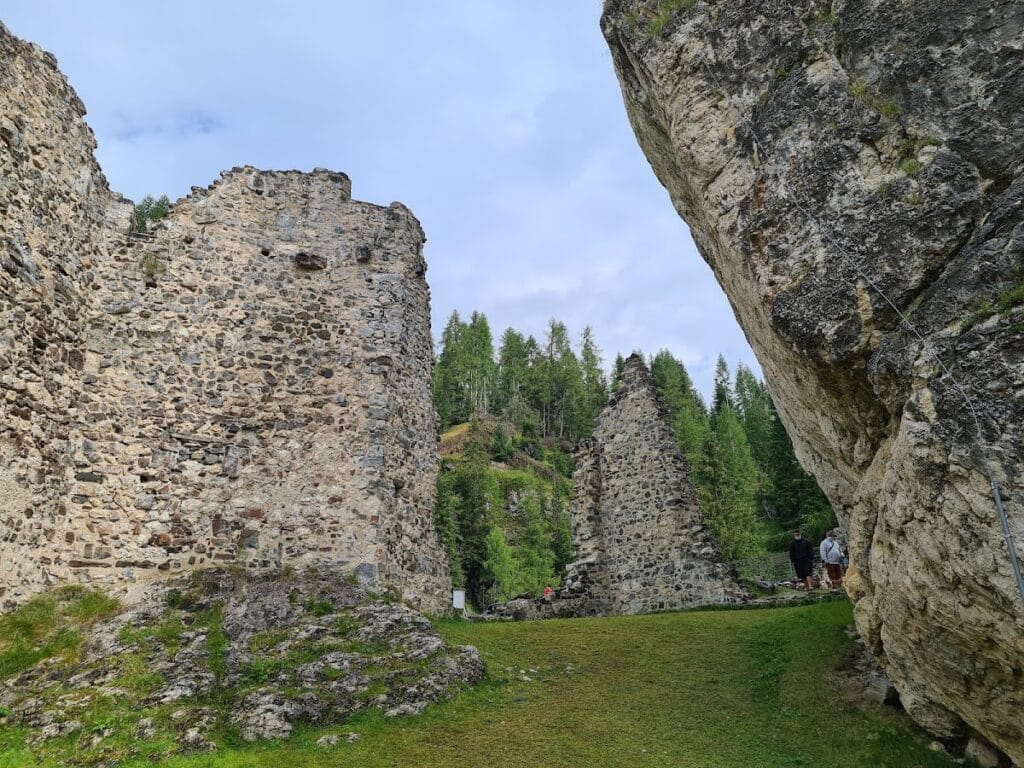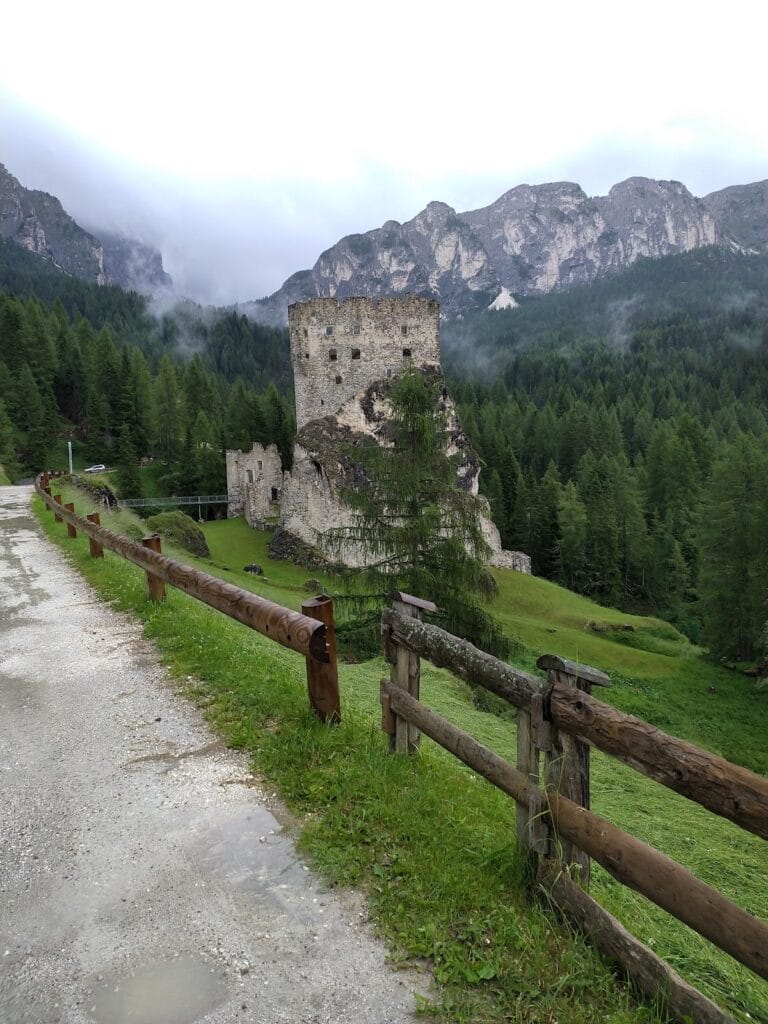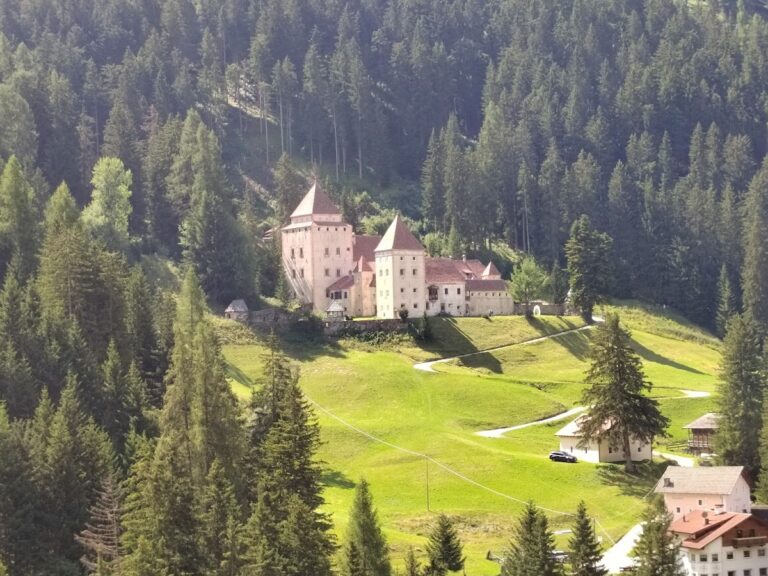Andraz Castle: A Historic Fortress in Northern Italy
Visitor Information
Google Rating: 4.4
Popularity: Low
Official Website: www.castellodiandraz.it
Country: Italy
Civilization: Unclassified
Site type: Military
Remains: Castle
History
Andraz Castle stands above the municipality of Livinallongo del Col di Lana in northern Italy. It was constructed in the early 11th century by a noble family from Buchenstein, likely originating from South Germany, to guard an important trade route known as the “Iron Road.” This route was vital for transporting fine iron ore mined from Monte Pore, highlighting the castle’s early strategic and economic significance.
By 1091, the territorial lordship of Buchenstein was transferred by Emperor Henry IV to the Bishopric of Brixen. Over the next hundred years, the bishops of Brixen distributed large parts of these estates to their vassals, including noble families such as the Rodenegg and Schöneck. Gradually, through inheritance and purchases, the Schöneck family consolidated control over Buchenstein, including Andraz Castle. Around 1200, the lords of Buchenstein sold the castle to the bishops, who then passed it among various noble vassals such as the Schönecks, Avoscano, and Stuck families, all under the authority of the prince-bishops.
From 1416 until the secularization in 1803, Andraz Castle was governed directly by the prince-bishops of Brixen and functioned as a modest military garrison, led by a captain. During the mid-15th century, the philosopher and churchman Nicolaus Cusanus found refuge and a place for contemplation within its walls amidst regional turmoil. The castle gained renewed importance in the 16th century, largely due to the expansionist ambitions of the Republic of Venice, as the surrounding Dolomite region was rich in resources such as timber and minerals, intensifying the need to protect these economic assets.
Mining activity near the castle came to a halt in the mid-18th century. After the dissolution of ecclesiastical principalities in 1803, the castle lost both its military and administrative roles. The final garrison commander, Giovanni Lindner, departed at that time. In 1808, the castle entered private ownership under Andrea Faber, but by the mid-19th century it was neglected to the point that its roof was removed to provide firewood. During the First World War, the structure was repurposed as a field hospital, suffering considerable damage. Efforts to conserve and restore the ruins began only in the late 20th century under the guidance of the regional heritage authority.
Remains
Perched on a rocky outcrop exceeding 1700 meters above sea level, Andraz Castle is recognized as Italy’s highest castle. Its elevated position offered commanding views and control over several crucial mountain passes connecting Belluno, Agordo, Bressanone, Val Badia, and Ampezzo. The fortress was built primarily in stone and utilized the natural defensive advantages of the steep spur on which it stands.
Access to the castle was originally gained by a solitary stone ramp, parts of which have been partly restored. This ramp connected multiple stacked floors within the castle, facilitating movement between different levels. Supplies and goods were raised into the fortress using a winch system, a mechanism that likely allowed for safer and more efficient transport in the challenging terrain.
Encircling the main rocky promontory was a defensive curtain wall, which enclosed space sufficient for stables alongside the main buildings. Some sections of this wall retain stone corbels, projecting supports that once held a wooden gallery. This gallery would have served as a patrol walkway for guards monitoring the surroundings. Near the primary entrance, there was a chapel dedicated to Saint Raphael dating from the 16th century, notable for its finely crafted wooden altar. This altar has been preserved and relocated to the nearby village church of Andraz.
The castle experienced several restorations following destructive fires in the late 15th and 16th centuries. Between 1484 and 1488, repairs not only rebuilt damaged portions but also reduced the fortress’s purely military functions, expanding residential and administrative uses. Additional restoration work followed fires in 1516 and 1599, reflecting ongoing care and adaptation to changing needs.
Today, the castle remains in a state of ruin owing to centuries of abandonment and the damage incurred during wartime use. Recent conservation initiatives have worked to stabilize the surviving structures, preserving the historical fabric and allowing the site to endure as a significant cultural monument.

